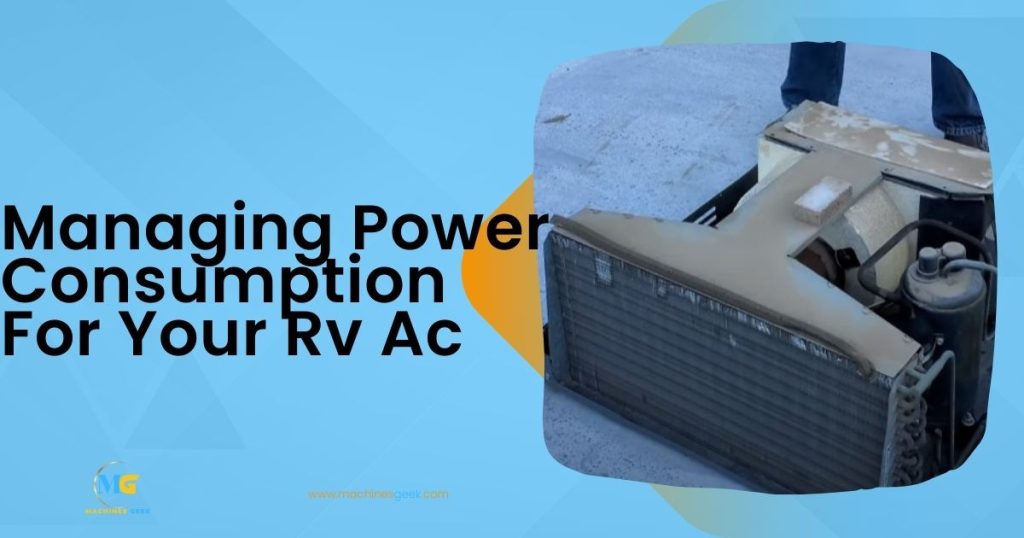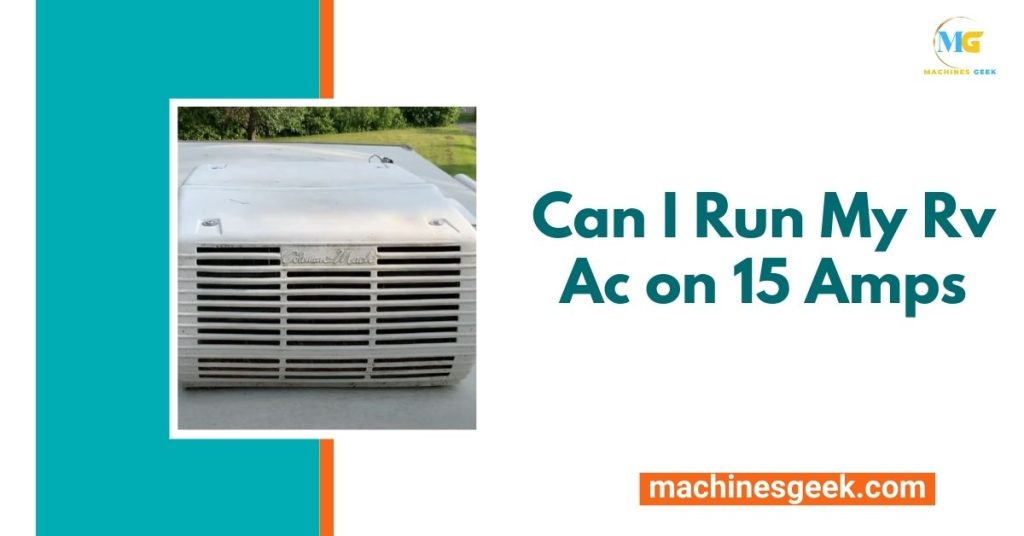Can I Run My RV AC on 15 Amps? Yes, you can run your RV AC on 15 amps. Many RV owners wonder if it is possible to operate their air conditioning unit on a 15-amp electrical connection.
The good news is, it is possible! Running an RV AC on 15 amps is generally achievable, although it may have some limitations. We will explore the factors that determine if you can run your RV AC on 15 amps, the potential drawbacks, and some tips to ensure smooth operation.
Whether you are planning a camping trip or live full-time in your RV, understanding your electrical needs is crucial. So, let’s dive in!
The Electrical Requirements Of RV AC Units
RV AC units require a significant amount of electrical power to function properly. The power consumption of these units can vary depending on the size and specifications of the AC unit. Most RVs are equipped with either a 15 Amp or a 30 Amp electrical system.
The main difference between these two systems lies in the amount of power they can provide. A 15 Amp circuit can only supply a limited amount of power, while a 30 Amp circuit can provide more power.
Running an RV AC unit on a 15 Amp circuit can be challenging since the unit typically requires more power than what a 15 Amp circuit can provide. The AC unit may not function optimally or might not even start running at all.
To run an RV AC unit efficiently, it is recommended to connect it to a 30 Amp circuit or use a power management system to regulate the power usage. In conclusion, while it may be possible to run an RV AC unit on a 15 Amp circuit, it is not ideal and can lead to potential issues with the performance of the AC unit.
Evaluating Your Rv’s Electrical System
If you’re wondering whether you can run your RV AC on 15 amps, it’s important to evaluate your RV’s electrical system first. Understanding how your RV’s electrical system works will help you determine its limitations and whether running your AC on 15 amps is feasible.
Assessing the available power source is essential. Most RVs have a 30 or 50 amp service, which provides enough power to run all appliances, including the AC. However, if you only have a 15 amp service, running the AC may pose challenges.
Before running your RV AC on 15 amps, consider a few factors. Firstly, check the AC’s power requirements. Some RV AC units are designed to run on 15 amps, while others require 30 amps or more. Secondly, consider the other appliances you’ll be running simultaneously with the AC. Running multiple high-wattage appliances simultaneously on a 15 amp system may overload it.
In conclusion, it is possible to run your RV AC on 15 amps, but it’s important to understand your RV’s electrical system and the limitations it may have. Assessing the power requirements, considering other appliances, and monitoring your electrical usage will help you make an informed decision.
Managing Power Consumption For Your Rv Ac

Running your RV’s air conditioning (AC) on a 15 Amp power supply is often a concern for campers. However, there are ways to manage power consumption and still enjoy cool comfort in your RV.
Here are some tips to reduce AC power consumption:
- Set your thermostat to a higher temperature during the day to minimize AC usage.
- Ensure proper insulation in your RV to keep cool air inside and minimize the need for the AC to work harder.
- Clean or replace the AC filters regularly to maintain optimal airflow.
- Optimize other electrical appliances’ usage by running them during off-peak hours or turning them off when not in use.
- Consider utilizing energy-saving features, such as the fan-only mode or sleep mode on your AC unit.
- Invest in a power management system to monitor and control power usage in your RV.
- Use shade or awnings to minimize direct sunlight heat inside your RV.
By implementing these strategies, you can effectively manage your RV AC’s power consumption and enjoy a comfortable camping experience without overloading your electrical system.
Using A Generator Or Inverter To Power Your Rv Ac
Using a generator or inverter to power your RV AC requires careful consideration of power output requirements and properly sizing the generator or inverter.
To determine the power output requirements for your RV AC, you need to identify the starting and running wattage. The starting wattage is the amount of power needed to start the AC unit, while the running wattage is the power required to keep it running. This information is usually available in the AC unit’s specifications or user manual.
Once you have determined the power requirements, you can choose the right generator or inverter. Generators are typically rated in watts and can be powered by gasoline, propane, diesel, or solar energy. Inverters, on the other hand, convert 12-volt DC power from your RV battery into 120-volt AC power, which can be used to run appliances like the AC unit.
| Generator Type | Starting Power (Watts) | Running Power (Watts) |
|---|---|---|
| Portable Gasoline Generator | 3000 | 2800 |
| Portable Inverter Generator | 3000 | 2800 |
| RV Ready Gasoline Generator | 4000 | 3500 |
| Portable Propane Generator | 4000 | 3500 |
When sizing your generator or inverter, it’s important to choose one that can handle the starting wattage of your AC unit, as well as provide enough running power to keep it running smoothly. If the generator or inverter cannot handle the starting wattage, it may cause the AC unit to struggle or fail to start altogether.
By understanding the power output requirements and properly sizing your generator or inverter, you can ensure that you can run your RV AC efficiently and effectively even on a 15-amp power source.
Modifications And Upgrades For Running RV AC on 15 Amps
Running an RV AC on 15 amps can be challenging, but with the right modifications and upgrades, it is possible to achieve. Upgrading your RV’s electrical system is the first step towards ensuring a smooth operation. This involves making sure that your current wiring, outlets, and circuit breakers can handle the increased load.
Another important modification to consider is installing a soft start or hard start capacitor. These devices help reduce the initial power surge when the AC unit starts, allowing it to run more efficiently on a limited power supply. They can also extend the lifespan of your AC unit and prevent unnecessary wear and tear.
Additionally, there are several other modifications and gadgets that you can consider for optimizing your RV’s AC performance on 15 amps. These include using energy-saving RV air conditioners, installing voltage boosters or regulators, using solar power, and implementing remote temperature control systems. These upgrades can help you make the most out of limited electrical supply and enjoy a comfortable cooling experience while camping.
Monitoring And Managing Your RV AC Power Usage
Monitoring and managing your RV AC power usage is essential to ensure that you can run your AC on 15 amps. One way to do this is by utilizing electrical management systems. These systems help to regulate and control the amount of power your AC unit consumes.
Tracking power usage with a monitoring device can provide valuable insights into how much power your AC unit is using. By monitoring your power usage, you can identify any inefficiencies or excessive power consumption. This information can help you make adjustments and optimize your AC unit’s performance.
Effective power management is also key. By following a few helpful tips, you can maximize your AC unit’s efficiency while operating on 15 amps. These tips include using energy-efficient appliances, reducing unnecessary power usage, and setting your AC temperature to a comfortable level.
Overall, monitoring and managing your RV AC power usage is crucial for running your AC on 15 amps. By utilizing electrical management systems and implementing effective power management strategies, you can ensure that your AC operates efficiently and optimally.
Common Issues And Troubleshooting
Running an RV AC on 15 Amps can present some challenges, but with a few troubleshooting tips, you can address common problems that may arise.
| Problem | Solution |
|---|---|
| Circuit breaker tripping | Check for overloaded circuits, reduce power consumption, or upgrade your electrical system. |
| Low voltage | Verify the voltage supplied to your RV, use a voltage regulator if necessary, or consider connecting to a higher amp service. |
| Inadequate wiring | Ensure your RV’s wiring can handle the AC’s power requirement, and replace any damaged or insufficient wiring. |
- If you’re unsure about any electrical repairs or modifications, it’s best to consult a qualified electrician or RV technician.
- They can assess your electrical system, provide expert advice, and recommend appropriate solutions.
- Professional assistance can ensure safety, prevent further damage, and optimize your RV’s AC performance.
Can I Use a Tesla Powerwall to Power My RV Air Conditioner on 15 Amps?
Yes, you can use a Tesla Powerwall to power your RV air conditioner, but it’s important to note that the Powerwall has a maximum output of 5kW, which translates to approximately 20 amps at 240V. This means it may not be enough to power a standard RV air conditioner, which typically requires at least 30 amps.
Frequently Asked Questions
Can I Run My RV AC on 15 Amps?
Yes, you can run your RV AC on 15 Amps, but it may have limitations on cooling capacity and power usage.
Will Running My RV AC on 15 Amps Affect Its Performance?
Running your RV AC on 15 Amps may cause reduced cooling capacity and longer cooling times, especially on hot days.
Are There Any Modifications I Can Make To Run My RV AC on 15 Amps More Efficiently?
To run your RV AC on 15 Amps more efficiently, you can consider using energy-saving settings, insulating your RV, and using shade to minimize heat buildup.
Conclusion
Running your RV AC on 15 amps may be possible, but it requires careful consideration and planning. With a few adjustments, such as managing your energy usage and utilizing a soft start device, you can potentially enjoy the comfort of your AC while staying within the limitations of a 15-amp circuit.
However, it’s essential to consult with a professional and ensure the safety and efficiency of your electrical system. Finding the right balance between comfort and practicality is key for an enjoyable RV experience.








